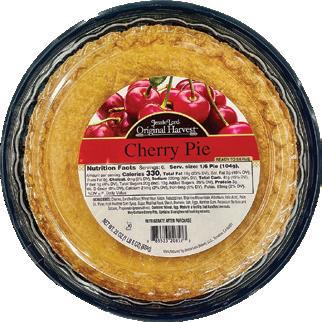




By Dolores Quintana
Rod Sharif, a Santa Monica man, was arrested on December 27, as the suspect in a fatal hit-and-run incident that killed a Vietnam veteran on December 22, according to the Santa Monica Police Department (SMPD).
The woman, a Santa Monica resident, was crossing the street on Wilshire southbound and was struck by a Toyota RAV4 heading eastbound. The driver then fled the scene at a high rate of speed as several witnesses watched. The crash was caught on surveillance video. The unidentified woman, a veteran, was pronounced dead at the scene.
The SMPD’s Traffic Unit, along with SWAT officers and detectives from the Criminal Investigations Division, executed search and arrest warrants at the home of the suspect, identified as Rod Sharif, in Santa Monica Canyon. Authorities recovered several pieces of evidence from the residence, including a white Toyota RAV4 with significant front-end damage consistent with a collision.
Sharif was taken into custody and booked on charges of murder and felony hit-and-run. Police revealed that Sharif has a history of prior arrests for driving under the influence and reckless driving.
Investigators are urging anyone with information about the incident or the suspect to come forward. Those with relevant details can contact Investigator Evan Raleigh at Evan.Raleigh@ santamonica.gov, Investigator Lantz Lewis at Lantz.Lewis@santamonica.gov, or the SMPD non-emergency dispatch line at 310-458-8491. The department’s Watch Commander is also available 24/7 at 310458-8427.

The city of Santa Monica will host a ceremony on Saturday, Dec. 21, to unveil a plaque honoring Lloyd C. Allen, a trailblazing advocate, entrepreneur, and public servant whose contributions have shaped the community, the city announced.
The event will take place at 3 p.m. at Virginia Avenue Park, 2200 Virginia Ave., near the roundabout entrance by the Thelma Terry building. The public is invited to attend the free ceremony, which will feature remarks from Mayor Lana Negrete and Allen himself, who celebrated his 103rd birthday in August. Light refreshments will be served.
“I am thrilled to celebrate one of our most prominent community members,
Lloyd C. Allen,” Mayor Negrete said in a release. “Mr. Allen’s legacy is seen and felt every day in Santa Monica, and it is truly an honor to acknowledge his decades of service and contributions to our community.”
The plaque honors Allen’s extensive contributions, including his role as Santa Monica’s first Black Recreation and Parks commissioner. Allen was instrumental in the creation of Virginia Avenue Park, where the plaque will be displayed.
The recognition follows a directive by the City Council in early 2024 to formally honor Allen’s legacy. In addition to his public service, Allen was a pioneering Black entrepreneur in the late 1950s, founding multiple businesses that enriched the local community. His ventures included Allen Maintenance, Allen Janitorial Supplies and Equipment, and Allen Vacuum Repairs, all based at 400 Pico Blvd.
“My commitment has always been to create spaces and opportunities where everyone, regardless of background, can come together, thrive, and feel a sense of belonging,” Allen said in a release.

At its annual organizational meeting, the Santa Monica-Malibu Unified School District Board of Education reelected Jennifer Smith as board president and elected Laurie Lieberman as vice president for 2025.
The board also extended a thank-you to outgoing vice president Jon Kean for his service.
Smith, who has served on the board since her election in 2020, expressed her commitment to advancing the district’s goals in her candidate statement: “By focusing on equity and access, empowerment, curiosity, and inclusion, I will continue to work to expand our abilities and create a wider umbrella for
all students to find success,” Smith stated in her candidate statement for the 2024 election. “We will see new pathways emerging for our secondary students this year along with the expansion of transitional kindergarten, while providing educational as well as social and emotional supports in this post-COVID era.”
Smith has a long history of advocacy within the district, having served as PTA president at both her children’s elementary and middle schools, as well as Santa Monica-Malibu PTA Council President from 2016 to 2018. She cochaired two voter-supported campaigns to secure funding for the district, among other roles.
Laurie Lieberman, the newly elected vice president, brings over a decade of experience on the SMMUSD Board of Education. First elected in 2010, Lieberman earned a bachelor’s degree in sociology and a J.D. from UCLA. She worked as an attorney for the Santa Monica City Attorney’s Office for 13 years and has been involved in district PTAs since 1996.

Yeo Has Been With the City of Santa Monica Since 2006, Starting as a Senior Planner and Eventually Leading the
City Manager David White announced that Jing Yeo, the city’s planning manager, will assume the role of acting director of the Community Development Department starting Dec. 31.
Yeo will serve in the interim while the city finalizes its search for a permanent director. The recruitment process began after the retirement announcement of Director David Martin in September.
“Jing is a tremendous asset to the department, and I am grateful for her willingness to step up and lead the team as we complete the recruitment process,”
White said. “Her extensive experience and vast knowledge will be invaluable during this transition.”
Yeo has been with the City of Santa Monica since 2006, starting as a senior planner and eventually leading the Planning Division as planning manager since 2016. Before her tenure in Santa Monica, Yeo worked as a principal planner for the city of Palm Springs.
She holds a bachelor’s degree in urban and economic geography from the University of British Columbia and a master’s degree in planning and urban design from the University of Toronto.
This leadership change comes following the December retirement of former Community Development Director David Martin, who served the city for 29 years. Martin, a Santa Monica resident since 1988, had been instrumental in shaping the city’s land use and transportation policies, including major mixed-use housing initiatives and the planning of the city’s three Metro Expo Line stations.























Santa Monica Architects for a Responsible Tomorrow
You know, sometimes you walk by a building and think, that place has some stories to tell.
What if those stories weren’t just about the people who lived or worked there, but about the building itself, and the idea of giving older buildings a whole new life of stories through adaptive reuse. It’s relevant as Santa Monica grapples with issues like sustainability, affordability, and preserving our unique beachfront character. Think about some of your favorite spots in Santa Monica, say, like El Cholo. That building actually used to be a car dealership and garage. Or the Victorian on Main St, an old house that’s now a bar and event space?
What’s so interesting about adaptive reuse is that it can take so many forms. It’s not just about turning old factories into trendy lofts, although SMa.r.t. has written about conversion to affordable housing for years. We see things like airplane hangars turned into event spaces like the Barker Hangar. Or Googie style restaurants like the Penguin finding new life as a dental office, and then being once again adaptively reused as a restaurant.
Adaptive reuse isn’t just about quirky aesthetics. It’s about making our city more sustainable, more affordable. And, what makes adaptive reuse so sustainable? Well, the greenest building is the one that’s already standing and not demolished. Construction creates a ton of waste. It actually makes up about 40% of all the stuff we send to landfills. By reusing existing structures we reduce waste, and have less negative environmental impact. Is it more expensive to renovate an old building than to build a new one? Not necessarily. Of course, there are costs in bringing old buildings up to current codes, e.g. accessibility, earthquake safety, and energy efficiency, etc. But adaptive reuse can actually be up to 20% cheaper than tearing down and building new, as you preserve all the embedded energy that went into creating the original structure.
Preserving the character of older buildings often hold a lot of sentimental value and community memories. You probably have certain places in Santa Monica that you feel a special connection to, that have a specific memory associated with them. And those are the kinds of places that adaptive reuse helps to preserve. It’s keeping those little pockets of history and personality alive instead of letting them get bulldozed for yet another generic high-rise.
Another important aspect is that retaining smaller existing buildings can actually create more opportunities for local businesses, independent bookstores, and neighborhood cafes that give Santa Monica its charm. They often can’t afford the skyhigh rents in the new developments, many

of which remain empty due to those high rents. So adaptive reuse could actually help keep Santa Monica affordable, at least for small businesses. And it’s not just about businesses, as adaptive reuse can and should play a role in creating more ‘actually affordable’ housing, as SMa.r.t. has been writing about for more than ten years.
One criticism of adaptive reuse came from a Planning Commissioner who argued that it’s not always financially feasible, especially when it comes to converting office space into affordable housing as office space and apartment spacial and functional requirements are different. And she pointed out that the gap between office rents and what people can afford to pay for housing can be wide, likely requiring government subsidies to bridge that gap and the City might not have the resources to do that. Especially in its current economic state. Thanks to fiscal mismanagement and personnel costs over the past 20 years or so we seem to be on the verge of bankruptcy. It’s a tough balance to strike, especially when a developers profits are prioritized, and council members didn’t seem to have the courage over these past 15-20 years to push back on encroaching state laws that are wresting local planning control.
As such there is the issue of meeting Santa Monica’s state-mandated affordable housing requirements, which is a huge challenge, as we have already met the market rate requirements of roughly 2800+/- units, but are nowhere near meeting the required 6100+/- “affordable” units. At the current development rate of about 85 market-rate units to 15 affordable units, it will require another
approximately 30,000 units to be built. Whoa! Let that sink in while considering the need to address the increased water, sewer, power, traffic, other infrastructure
needs, and the necessary funding.
Basically, if you include some affordable housing units in your project the state lets you build taller and more





dense than the local zoning code allows. To date, there are projects in the concept phase of up to 34 stories, even though the city is supposed to be trying to reduce building heights. Not happening. These density bonus laws are acting like steroids, pushing developers to prioritize size and profit over the well-being of the community. The city recently formed an adaptive reuse technical working group to explore the issue and propose recommendations, (a little late!), but the question is whether it can actually make a difference given these powerful state regulations that previous city councils never fought against.
We have to ask ourselves, what kind of Santa Monica do we want to live in, and what kind of city do we leave for future generations? An example of adaptive reuse that has already happened in Santa Monica, is the old Paper Mate building. It’s called the Pen Factory now, and it’s been transformed into office space, and by incorporating some green space and a dog park, this industrial site was made more human-scaled and integrated into the neighborhood without adding additional height. Well done.
But the Penn factory could have been even better if the developer had reduced some office space and included housing, balancing the jobs/housing imbalance. Maybe through additional zoning incentives, or even some form of financial assistance. The city’s role becomes crucial in the need to find creative ways to make affordable housing a more attractive
option for developers or find a way to simply stop the unnecessary over-building of market-rate units.
So what do we do about these state density bonus laws that seem to be driving so much of the development that’s changing the face of Santa Monica? Playing out in cities all across California as the state pushes for more housing, local communities are trying to figure out how to balance those mandates with their own visions for their future. While the intent might be to encourage more affordable housing, in reality, these laws lead to luxury developments that don’t really help people who are struggling to afford to live here.T he affordable units in those new buildings are often still way out of reach for many people. And these laws create a kind of arms race where developers are constantly trying to push the limits of what’s allowed, resulting in taller buildings, more density, and a gradual erosion of the community’s character. One thing that’s clear is that we can’t just rely on the old model of building high rises. It’s about solutions that create a city that is sustainable, equitable, and livable for everyone, and adaptive reuse can play a big role in that. It’s not a magic bullet, but it helps preserve our history, reduce our environmental impact, create more affordable housing options, and foster a more vibrant and interesting urban environment. Do we continue to follow the trend of high-rise development that we’re seeing being built across our town? Or do we preserve the more human-scale

beach town that Santa Monica is known for and the relief it provides our regional neighbors as they trek here to the beaches to escape the heat of the valleys and east side on those unbearable hot summer days? Maybe hot winter days too with global warming.
We need to move away from this idea of growth at all costs and embrace a balanced approach that considers the long-term well-being of both people and the planet. It’s not just about buildings. It’s about people. It’s about the kind of community we want to create here in Santa Monica.
It’s about finding ways to balance progress with preservation, affordability, with sustainability. Livability, not just profitability!
Bob Taylor, AIA For SMa.r.t.
Send comments to santamonicasmart@ gmail.com
Santa Monica Architects for a Responsible Tomorrow
Robert H. Taylor AIA, Architect; Dan Jansenson, Architect & Building and FireLife Safety Commission; Thane Roberts, Architect; Mario Fonda-Bonardi AIA, Architect; Samuel Tolkin Architect & Planning Commissioner; Michael Jolly, AIR-CRE; Jack Hillbrand AIA, Architect & Landmarks Commissioner
For previous articles see www. santamonicaarch.wordpress.com/writing


A call at 3:40 a.m. jolts you from a deep sleep.
What day is it? What time is it?
A few short hours from now is the time you’re supposed to wake up, hurry the kids to school and yourself to work. But you know from the pit in your stomach, that call is important.
It’s the one no one wants to get — your father, in his 80s, had a fall. Luckily, he wore an emergency alert system that notified responders immediately.
“We’re transferring him to the hospital. A broken hip and dislocated shoulder,” responders say, as your body responds to the incident before your mind does, awakening a deep sorrow and your will to sit up.
At the hospital, dad is headed into surgery. The waiting, and the racing thoughts begin as dad — blissfully under anesthesia — enters the operating room.
What happens next? Is he safe at home? Does he need a caregiver? Who will prepare meals for him? Does he need mobility equipment? How can I prevent my father from falling, but also care for my immediate family.
This is what you call a “perfect storm,” scenario that happens so often and anticipated by families with aging loved ones. These is the moment that Safely Home Again becomes your resource: to help you and assist you. A small business that assures you and your family have a home that is as hazard-free as possible, and the management of your loved one is underway.
Through case management and home and fall safety assessments, Safely Home Again, founded by Los Angeles native Madeline Fry, helps aging adults maintain their independence and live worry-free in the comfort of their home.
Safely Home Again assesses fall risks and hazards in the home, recommending safety measures that families can take to prevent accidents. The 240+ point assessment tool, which requires a certification to conduct, looks for hazards that exist in and around the living space. Hazards may include poor outdoor lighting, inadequate wheelchair ramp, unsafe staircases and more. Once the hazards are found, Safely Home Again provides solutions and vendors who can then be available to complete the actual modifications.
“We become your consultant, advocate

and family member,” Fry said.
Caring for aging parents and loved ones is a weight few can carry, but with Safely Home Again, you aren’t doing it alone.
“We’re here for you, so you can get back to what you need to do. Whether that’s your family time, anniversary celebration, piano recitals or basketball games. To see you through those moments — the good and the bad — Safely Home Again’s services are the assurance you and your family needs.
Safely Home Again also aids with discharge planning upon leaving a hospital, skilled or rehabilitation facility; orders and schedules lifestyle services
such as the delivery of medical mobility equipment, meal delivery; and choosing of caregivers.
Safely Home Again is the simple solution for complex issues that, in scenarios like the one above, are hard to navigate without professional help.
“If you find yourself in a similar situation, reach out to us. We’ve got your back, we’ve got your loved ones’ backs, and most importantly, we’re here for you,” Fry said.
To learn more about Safely Home Again and to schedule a safety assessment, visit SafelyHomeAgain.com.

By Susan Payne
While School of Rock West Los Angeles is celebrating its 14th anniversary this November, the school continues to do what it does best — teach kids how to rock.
School of Rock’s patented method of teaching uses programs that are designed to encourage learning in a supportive environment where students of all skill levels are comfortable and engaged. For kids, teens and adults, School of Rock takes music school concept to the next level.
Currently, students in Performance, School of Rock’s hallmark program for ages 8 to 18, are preparing to play a show at the Viper Room in January, a tier of the program that culminates School of Rock’s long-standing method of teaching: performance-based music education.
For students as young as preschool aged, Little Wing teaches foundational
music skills through games and interactive musical activities. Rookies, ages 6 and 7, are given one weekly group music lessons learning fundamentals like chords, rhythm and song structure. In Rock 101, for ages 8-13, students have one weekly group rehearsal and a weekly private lesson to learn music concepts and skills behind their performance songs.
Justin Salmons, the general manager of School of Rock LA, has been part of its community for almost as long as the school has been opened, watching students grow as musicians and take lessons learned into the real world.
“During the spring season, when we get on stage and have to say goodbye to our seniors, I feel like a proud parent. We know we’re sending out great citizens of the future into the community, whether they pursue music as a career or a hobby. The lessons learned in School of Rock will carry them for a lifetime,” Salmons said. “As long as they have the passion and drive, we’ll help take them to the
highest levels.”
After January, School of Rock gears up for new students and returning students in the spring, inviting kids of all skill levels, ages and music aspirations to grow into real musicians. Spring classes start in February and ends in late May.
“We’re a growing, passionate community dedicated to enriching lives through performance-based music education, but more so, our school is a safe place for students to be themselves and express their feelings. For new and returning students, its edifying and enriching for them to be surrounded by other learners who love music just as much,” Salmons said.
Other programs at School of Rock include Songwriting for ages 12 and over, offering a weekly private lesson and collaborating with other students in a group to work together on songwriting exercises and lyrical workshops. This program is only periodically offered and is one of School of Rock’s week-long
summer camps.
Performance places kids in an ensemble group that study a band or genre over the course of several months, learning and rehearsing songs in preparation for a live end of season performance at a real venue, such as the Whisky-a-Go-Go, Troubadour and Viper Room. Students in Performance can later advance by auditioning for our House Band and then AllStars.
Adult Program invites students over 18 to improve their musical proficiency or pick up an instrument with no prior experience. This program is also performance based, so they learn concepts and apply them in a live setting. Online for all ages, invites students to learn from the comfort of their home.
“When students are first starting out, we make it really fun for them. As they learn more, we help shape them into serious musicians. So many of our students stay for years, and that’s a testament to our mission and drive,” Salmons said.
